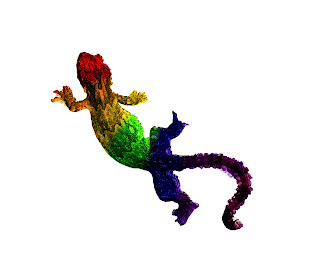This first image is a different version of my Doorway image, what i tried to do here was create a mist effect to make it feel even more mysterious but i just didn't think i got the effect to look real enough so in the end i chose to use a version without mist which work and looked a hell of a lot better.
The image above and the one below where two i tried using a process of adding a pattern so as to make it appear that the photo was made up of a series of squares. To make up these squares i used other photos in the case of the above image from the surrounding area while with the portrait i used other shots of myself. I didn't use either because i just didn't feel the images really fit in with the rest of the photos I'd done. The effect isn't a bad one its just I'd didn't think it felt right for this particular assignment.
Above is another attempt i had at a Tilt Shift image, the one i used in my assignment looked alot better and really showed off the nature of the process much better. Again it isn't exactly a bad photo its just i did feel it look right maybe i used to much blurring and it would have worked better if the background and foreground had a little more focus.
The final image i chose not to use was one where i had attempt to introduce a sunrise/set into a landscape. The landscape i used was relatively dull light wise so i was interested to see whether i could add this kind of lighting and change the complete feel of the original. I used lens flare to create the sun effect and then a number of layering,blending and brush effects to try and get it to look and feel right. Alot of the process i took from a number of different tutorials off the Internet combining them to try and get the image i wanted but in the end although it did alter the reality of the image i didn't think it look that realistic and in the end gave up on the process.



















